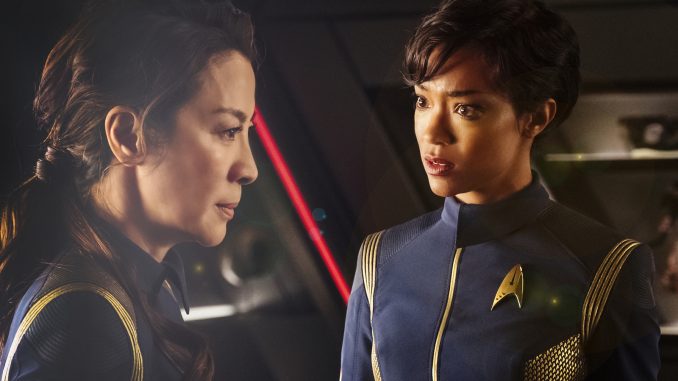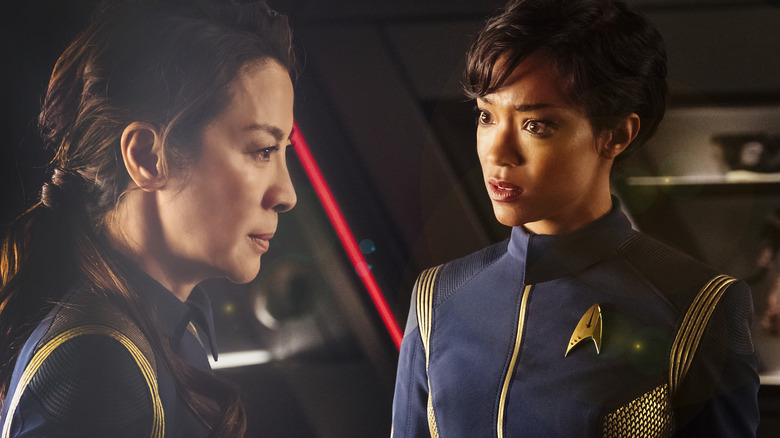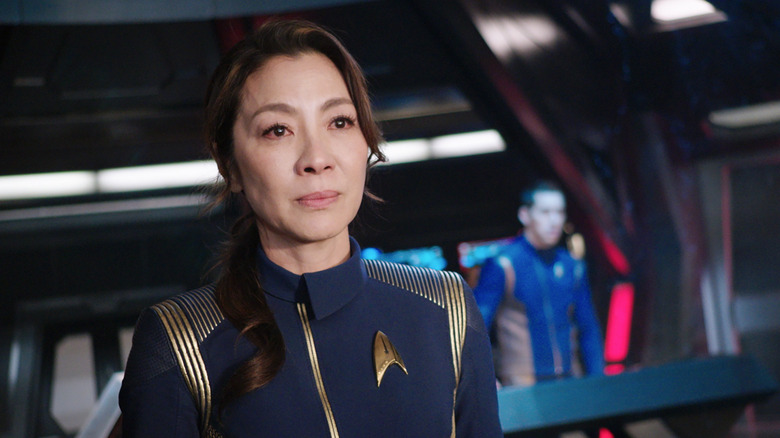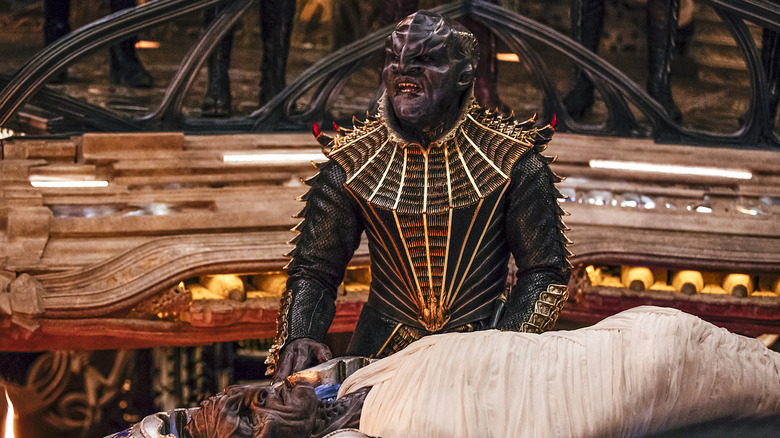
The story of the making of “Star Trek: Discovery” is well-known to Trekkies with a smattering of inside-baseball knowledge. Bryan Fuller was asked to create a new “Star Trek” series by the higher-ups at CBS, and he was eager to do so. He loved “Star Trek,” having written scripts for “Star Trek: Deep Space Nine” and “Star Trek: Voyager.” He and Alex Kurtzman began assembling a new series, as CBS didn’t yet have an idea of what they wanted. Fuller had a novel idea: a “Star Trek” anthology series. He envisioned a series of multiple 10-episode seasons, each one set at a different time within the future history of “Star Trek.” The first season would take place shortly before the events of the original “Star Trek,” the second would run concurrently with the original “Star Trek,” the third during the age of “Star Trek: The Next Generation,” and so on, ending in the distant, distant future.
Expectations were high, and a lot of CBS muckety-mucks wanted to get their fingers in the pie. Fuller kept butting heads with CBS. It was a hard gig. What’s more, Fuller was spread thin, also serving as the showrunner on “American Gods,” so it was rough all over. Eventually, Fuller brought in a few co-showrunners shortly before being asked to leave. Other showrunners eventually entered the scene, and “Discovery” was developed without his input. Only some of what Fuller invented went into the final show.
Some of what remained is detailed below, but a recent interview with the podcast The D-Con Chamber, handily transcribed by Inverse, has revealed a lot more of Fuller’s original ideas for the first time. He even revealed certain members of the cast he had been eyeballing.
Captain Gillian Anderson and Klingon Laurence Fishburne were on the docket
It seems that casting was still underway when Fuller was taken off the “Discovery” project. He revealed that Sarek, Spock’s father, was to play a part much earlier in the series and that he wanted actor Richard Armitage to play the character. One might know him as Thorin from Peter Jackson’s “Hobbit” movies, although he has had quite a prolific career. Sarek, of course, ended up appearing in the second season of “Discovery,” and was played by James Frain.
Most excitingly, Fuller revealed two giant stars he was gunning for. “Gillian Anderson was going to play a Starfleet captain,” he said. Also, he wanted “Laurence Fishburne as a Klingon.” Anderson, of course, is known to sci-fi fans of the 1990s as Dana Scully from “The X-Files,” giving her nerd cred, but she has also gained a great deal of acclaim for her roles on “Sex Education” and, more recently, “The Crown.” She’s also worked with Fuller on his TV series “Hannibal,” as did Fishburne. There was every reason to believe he would be able to convince them to star on “Star Trek: Discovery.” This news is likely making Trekkies squirm with disappointment at the missed opportunities.
He also commented that the short-tempered engineer Paul Stamets was originally going to be played by Wilson Cruz, while Stamets’ husband, Dr. Hugh Culber, was going to be played by Anthony Rapp. In the final version of the show, the roles were reversed. Oh yes, and Culber was originally envisioned as an Andorian, the blue-skinned, white-haired species with antennae.
It’s hard to say why these casting ideas weren’t implemented, although one may theorize that Fishburne and Anderson would have been expensive hires.
Fuller hated the uniforms and the Klingons that Discovery went with
The casting of Michelle Yeoh, it seems, was Fuller’s idea. She played Captain Georgiou, later killer and replaced by an evil doppelgänger from a parallel universe. The evil Empress Georgiou recently appeared in the TV movie “Star Trek: Section 31.” It wasn’t well-received. Fuller does not accept blame for some of the more controversial elements of “Star Trek: Discovery,” saying that, “On my last week, I approved the Starfleet uniforms, which they tossed out, and rejected the Klingons, which they kept.”
The uniforms on “Discovery” were, unlike more recognizable Starfleet uniforms, full-body blue jumpsuits trimmed with gold, silver, or bronze, depending on the officer’s department. They were okay-looking uniforms, but they didn’t scream “Star Trek.” More widely hated was an infamous redesign of the Klingons. The species was given new outsize heads, big monster claws, and extraneous nostrils. Also, they had no hair, and their skin went from a more natural human tone to either jet black, sickly gray, or milk white. The Klingon design was so widely hated that the new “Discovery” showrunners began fleeing from it in the second season. By the days of “Star Trek: Strange New Worlds,” the Klingons looked a lot more like they did in the 1990s.
“Discovery” isn’t as well-liked as many of the other “Star Trek” shows, and it clearly suffers from having way too many producers in the room (each episode credits at least 20). After five seasons, it has come to an end, and the show kind of — kiiind of — stuck with Fuller’s anthology concept by skipping forward in time at the beginning of its third season. The fact that “Discovery” is a violent action series with regular murders feels more like Kurtzman’s doing.




Leave a Reply